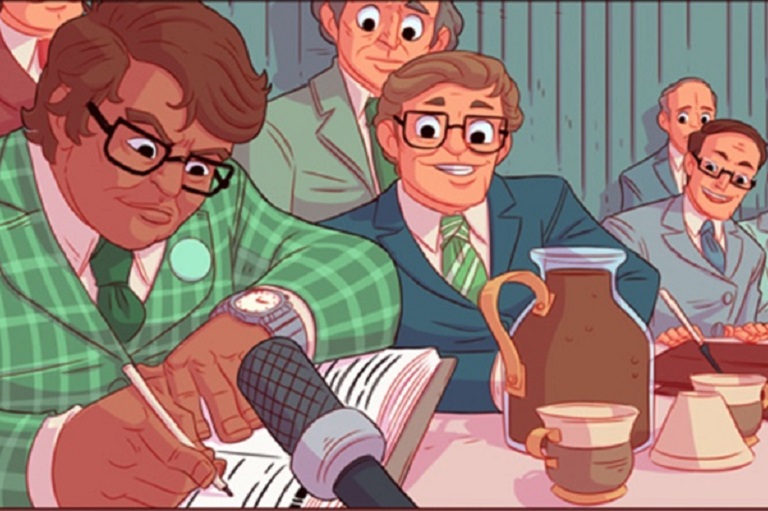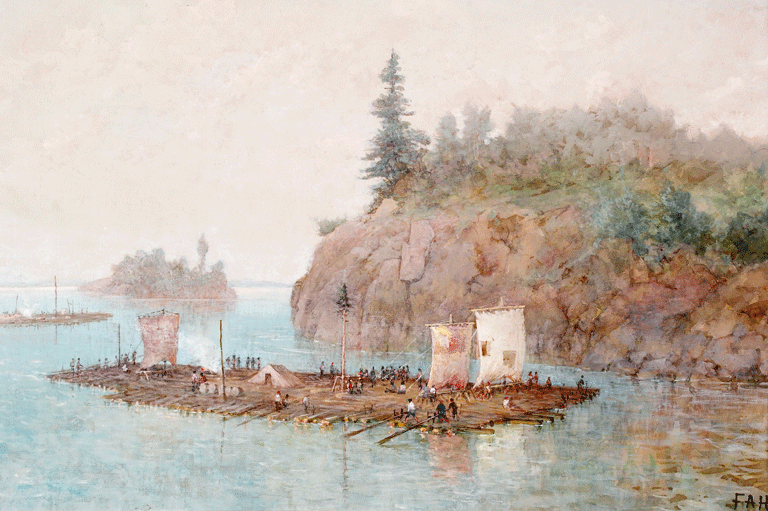Settler Women in Canada
Grade Levels: 5/6, 7/8, 9/10
Subject Areas: Social Studies, History, Geography, Science
This lesson builds on the digital issue of Kayak: Canada’s History Magazine for Kids entitled “Settling in Canada” and touches on aspects of the activities developed previously in the “Great Canadian Women” issue.
Lesson Overview
In this lesson, students will investigate what daily life would have looked like for the women from the six settlements listed in the “Settling in Canada” article: Cuper’s Cove, Newfoundland; Terrebonne, Quebec; Birchtown, Nova Scotia; Red River Colony, Manitoba; Scott’s Mills (Peterborough), Ontario; and Endeavour, Saskatchewan.
Students will situate women’s various experiences within the historical context in order to better understand their unique perspectives and roles. They will reflect on the level of economic, political, and social power that women in each of these settlements would have had, while considering the important role that women played within their families and communities. Students will then consider the significance of these power dynamics on women’s roles and rights.
Time Required
3-4 lessons
Historical Thinking Concept(s)
- Identify continuity and change
- Take historical perspectives
Learning Outcomes
Students will:
- Use tools for research and data gathering.
- Assess the reliability of data.
- Demonstrate their understanding of the key roles and responsibilities of settler women, including decision-making, respect, rights and responsibilities, and governance.
- Communicate and apply: compare the areas of responsibility and status of settler women with those of women of today.
Background Information
Canada is a mixture of many different people. Since time immemorial, the land that would become Canada was home to many different First Nations and Inuit people. Many others came from all over the world to start a new life. Some thought they were coming to an empty land that was theirs for the taking; many understood that they were building a life where First Nations, Métis, and Inuit lived. These settlers mainly came from Europe, leaving behind countries where they could never afford land of their own. Some gave up and went back, but most stuck it out through brutal weather, loneliness and back-breaking work to build a life for their families.
Women were no exception, even though their contributions have often been overlooked throughout history. Frequently, women have not had the same political, economic, and social power as men (for example: voting rights, property rights, the right to own a credit card, etc.), and many have fought for women’s rights at the same time as they were doing great things in medicine, art, journalism, business, science, politics, agriculture, music, sports and more. The ways in which women have aided in the development of their families and communities have evolved over time, just as their rights have continued to evolve.
Lesson Activity
Activating: How will students be prepared for learning?
As a group, consider how some of the first settler women in what would become Canada contributed in essential ways to providing the basic needs of food, lodging, and clothing for their families:
- What are some more roles or responsibilities that settler women likely had (or didn’t have)?
- Do you think women always received recognition for their contributions?
- Do you think settler women had equal political, civil, economic, and social rights?
- What are some additional factors to consider that might shape women’s roles and rights (e.g. race, class, age, culture, environment, etc.)?
Acquiring: What strategies facilitate learning for groups and individuals?
Divide students into six groups, assigning each group the responsibility of researching the lives of women in one of the settlements listed in the “Settling in Canada” article.
Suggest the following questions to help guide students in their initial research:
Focus 1
What were the settlement’s living conditions like (i.e. environment)? Review the ecological framework of Canada to help students understand the significance of the relationship between humans and the environment and the impact on quality of life (e.g. climate; available resources for food, clothing, and housing [fauna and vegetation]; traditional activities).
What was the standard of living for women in their country of origin? How were conditions similar or different?
Focus 2
What were community (e.g. tight-knit vs. isolated) and household (e.g. family dynamics, primary caregivers) structures like?
How did political (e.g. government) and economic structures (e.g. ownership of money and land) present themselves?
What were the cultural or religious realities (e.g. gender-based traditions or expectations)?
Focus 3
What roles and rights did men have?
What roles and rights did women have in contrast?
Were women’s roles official or unofficial? Law or unspoken?
What was considered work and what was considered a part of life?
Based on their findings, have each group create a detailed presentation (e.g. slideshow, poster, or short video) that portrays the life of an average women from their assigned settlement.
Applying: How will students demonstrate their understanding?
Have groups share their presentations with the class. Then, as a large group, compare and contrast the roles and rights of women from each settlement and have students share their additional insights and conclusions. Have students also reflect on the original questions and ask if and how their responses might have changed.
Discuss the following questions based on students’ conclusions:
- Have women’s roles and rights changed or stayed the same over time? Are things better or worse for women today?
- What were some of the greatest challenges faced by women then vs. now? What about additional challenges faced by women from different backgrounds?
- How do certain rights equate to others? From whose perspective? Think of structural hierarchies and examples of equality, feminism, freedoms and privileges, independence, safety, and ability to effect change.
Assessing
The teacher can assess the students’ learning through contributions to class conversations and the quality and thoroughness of group presentations.
Materials/Resources
- “Settling in Canada” issue of Kayak: Canada’s History Magazine for Kids
- The Ecological Framework of Canada
References
- “Great Canadian Women” issue of Kayak: Canada’s History Magazine for Kids
- First Nations Diary: Documenting Daily Life
- Women in Canadian History Education Guide
- McCord Museum – Collections and Research
Extension Activities
- Visit a living history museum to learn more about how both Indigenous people and settlers lived in earlier times. See references suggested in Kayak magazine.
- Draw a black and white scene of family life, including colour images of tools/activities/clothing found in online museum resources. Use the online collections of the McCord Museum or other similar collections.
Themes associated with this article
Advertisement




